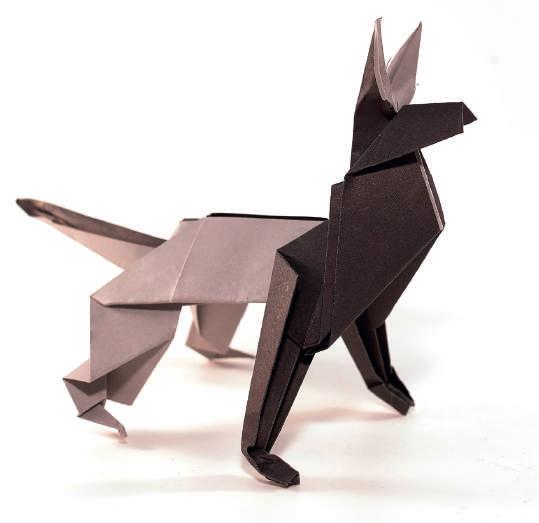Applications of Maths













Student Book

Example 1.5
A linear model
both models fit the data, how can you choose?
An exponential model
the situation that you are trying to model is important. Consider two different contexts that might produce the data you can see.
Scenario 1
an experiment, patients were given an injection of a drug. Their blood was then
to see what concentration of the drug remained after a period of time. The graph
shows the drug concentration levels on the vertical axis, and the
of time that had passed on the horizontal axis.
drug concentration decreases over time and eventually becomes zero. It is not possible to have a negative amount of a drug in your blood, and this is a strong hint that the exponential graph is more suitable.
Scenario 2
lowest recorded temperature in a town is recorded each day. The graph above shows the temperature on the vertical axis, and time on the horizontal axis.
this scenario it is possible for the downward trend to continue and become negative. In this case, a linear model is more appropriate because the exponential model will never give you a negative answer.
given
and
It is not enough to look at data, or graphs, by themselves to choose a model. The model you fit must be appropriate to the context.
Example 1.6
A water tank is in the shape of a cylinder, with a spherical cap at the top. The cylinder has a height of 4 metres and a diameter of 5 metres. The total height of the tank is 5.5 metres, as shown in the diagram.
As the water tank fills, the height of the water level is recorded. The graph shows how the height of the water, h metres, varies with time, t hours.
a Explain why the final part of the graph varies from the initial part.
b h initially follows the model h = mt + c. Calculate the rate of change (by calculating the gradient) in the initial part of the graph, which is represented by m.
c The designer of the water tank wants to increase the amount of time it takes to fill the tank by 3 hours. She does not want to change the dimensions of spherical cap, and she wishes to keep the diameter of the cylindrical part of the tank the same too. Calculate what the new total height of the tank would be if she successfully implemented the changes.
a The bottom of the tank is a constant width, so it increases in a linear way with a constant rate of change. The top of the tank is not a constant width; it gets progressively smaller and fills up faster the higher it gets.
b After 2 hours the water is 4 metres high. You also know that at time 0 the height is also zero:
Rate of change is m = y2 – y1 x2 – x1 4 m – 0 m 2 h – 0 h = 2 metres per hour.
Remember to include units! As you are dividing metres by hours, the rate of change will be measured in metres per hour
c The tank takes 2 hours to fill up the cylindrical section, so the designer needs to increase this to 5 hours to meet her goal. You can substitute t = 5 into your equation:
h = 2t + c
c is zero as the y intercept is zero. h = 2 × 5 = 10
The new height of the cylindrical part of the tank must be 10 metres. You can see that the height of the spherical cap is 1.5 metres from the diagram, so the total height of the tank would be 10 m + 1.5 m = 11.5 m.
Exercise 1C
1 A clothing company measures the number of sales of swimming garments between September and April. Which formula would best model these results? Give a reason for your answer.
A S = −0.3d + 11 000
B S = (d – 106)2 + 20

C S = e −0.2x
2 A researcher produces a graph which shows the mass (tonnes) of vehicles plotted against the fuel consumption (miles per gallon) for that vehicle.
a Which formula would best model this graph? Give a reason for your answer.
A MPG = 37.285 – 5.344 × mass
B MPG = 800e −0.28×mass−3
b Use your chosen model to predict the number of miles per gallon a vehicle with a mass of 4.5 tonnes could expect to have.
3 A bathtub is being filled up with water. The graph here shows the height of the water, h (cm), over time, t (minutes), when both taps are turned on.
a At what time does the bathtub overflow?
b h initially follows the model h = mt + c. Calculate the rate of change in the initial part of the graph, which is represented by m.
Number of sales
Days past 1 September
Miles per gallon
Tonnes
c Sara fills the bathtub so that it is half full and then turns off the taps. She then turns on one of the taps. How long would it take before the bath reached its maximum height?
Height of w ater (cm)
Example 9.3
Import the data file “Ice_cream.csv” into RStudio. This file contains data about the gender of students sampled in a study, and their favourite ice-cream flavour.
a Produce a contingency table for Gender and Favourite Ice-cream.
b Calculate the proportion of females who preferred vanilla ice-cream, and calculate the proportion of males who preferred vanilla ice-cream.
c Perform a z-test for two proportions and interpret the result.
d Interpret the confidence interval.
Open the file “93.R”.
a After importing the data, you can produce a table using table(gender, ice_cream).
> table( gender , ic e_cr eam)
i c e_cr ea m
Gender Choc olate St ra w berry Va nill a F emale 32 29 48 Male 1 5 29 4 7
b There are 48 109 ≈ 44% of females who prefer vanilla, and 47 91 ≈ 52% of males who prefer vanilla.
c You can use the following R code: prop.test(x =c(48, 47), n=c(109,91)).
2- sample test f or equality of pr oportions with co ntinuity corr ection
data: c(48, 47) out of c(109 , 91 ) X- s quar ed = 0. 86 723 , df = 1, p- va lue = 0 .351 7 alternativ e hypo thesis: tw o. s ided 95 per ce nt confidence interval : –0 .22 486092 0.0 726278 3 sample estimates: pr op 1 pr op 2 0. 4403 67 0 0 .5164835
As the p-value is above 5%, you would fail to reject the null hypothesis. You cannot conclude that there is a statistically significant difference between the proportion of male and female students who prefer vanilla ice-cream. Notice that running this test calculates the proportions for you; they appear under “prop 1” and “prop 2” and match your answers. It is a good idea to calculate these proportions yourself, like you did in part b, to check that you ran the proportion test correctly.
d You can be 95% confident that the true difference in proportion between males and females is between −0.22 and 0.07. Zero is a plausible number within this range, which supports your decision not reject the null hypothesis.
Exercise 9C
1 Scott is looking at data about patients involved in a clinical trial:
Treatment Blood type O negative
Yes No
Successful
21
77 Unsuccessful
a Calculate the proportion of patients whose treatment was successful who had O negative blood.
b Calculate the proportion of patients whose treatment was not successful who had O negative blood.
c Perform a z-test for two proportions and interpret the result.
d Interpret the confidence interval.
When you are given a table of information, you do not need to import any data into RStudio. Just use the R code for performing the z -test for two proportions.
2 A researcher is reviewing hospital data concerning patients who were admitted after being involved in a car accident. The data are summarised in the table:
Seatbelt Outcome
Yes 159 22 No 56 85
a Calculate the proportion of people who wore seatbelts who survived the car accident.
b Calculate the proportion of people who were not wearing seatbelts who survived.
c Perform a z-test for two proportions and interpret the result.
d Interpret the confidence interval.

3 Import the data file named “9C.csv”. Harry has sampled books from his school library and noted the gender of the author (under the column “Gender”) and whether the book written was fiction or non-fiction (under the column “Type”).
a What type of data has Harry collected?
b Display the data using suitable diagrams.
c Produce a contingency table for Gender and Type.
d Calculate the proportion of fiction books with a female author.
e Calculate the proportion of non-fiction books with a female author.
f Perform a z-test for two proportions and interpret the result.
g Interpret the confidence interval.
h Harry says: “In Scotland, women are no more likely to write fiction books than non-fiction books”. Give two reasons why Harry cannot make this claim on the basis of his current data.
4 The file “9C.csv” also contains data from a sample of the Scottish population. Participants were asked their age and asked whether they are in good health. The data are represented in the spreadsheet files as follows:
Number used Age Health
1
2
0–20 Very good
Good
3 46–64 Poor
4 65+ Very poor
a Produce pie charts displaying the percentage of participants by age and by health.
b Produce a contingency table for age and health.
c Perform a z-test for two proportions to compare the proportion of 21- to 45-year-olds who describe themselves as being in good or very good health with the proportion of 65+ year-olds who describe their health as good or very good.
d Interpret the result of the hypothesis test and the confidence interval.
5 Import the file named “9 Scotland Pollution” into R. This dataset contains emissions readings from 2929 different water sources in Scotland, with a description of the type of water source and the year the sample was collected.
a Produce a table showing the number of different sources that were sampled, using the “Type” column.
b Produce a table showing the percentage of each different source sampled.
c Display this information in a suitable diagram.
d Adam decides to run a proportion test to compare the proportion of Lochs sampled with Rivers. Here is his output: > pr op .t est(x = c( 960 , 862), n = (2929 , 2929 ))
2- sample test f or equality of pr oportions with co ntinuity corr ection data: c( 960 , 862) out of c(2929 , 2929 ) X- s quar ed = 7. 4 954, df = 1, p- va lue = 0. 00618 6 alternativ e hypo thesis: tw o. s ided 95 per ce nt confidence interval : 0. 00942 41 07 00 0.0 57 49293 0 sample estimates: pr op 1 pr op 2 0 .3277569 0 .2942984
Adam says: “There is a significant difference in proportion between lochs and rivers in Scotland.” Is this correct?
10 Writing Your Project
This chapter will show you how to:
• structure your project
• match your data type to the correct graphical display and hypothesis test
• conclude your project
• present your project.
You should already know:
• the content covered in Chapters 4–9.
Project structure
Your project will be a report that includes the results from the statistical software that you are using, including tables, charts, graphs and the result of statistical calculations. The report should have the following sections:
• Introduction
• Subjective impression
• Analysis and interpretation
• Conclusion.
You will also be marked on the presentation of your project. These sections match up with the chapters of this book as follows:
Section Chapter Introduction 6 Subjective impression 7 Analysis and interpretation 9 Conclusion and presentation 10
Chapters 6, 7 and 9 each have a project section, with questions to help you think about your project. Completing these sections will help you gather all the information you need to write up your project in a 2000-word assignment. When completing your project, you should always think about your research question. Your introduction is where you state clearly what your research question is and provide background information about the area it relates to.
The subjective impression is about generating graphical displays and statistics to help you form an initial view about what the answer to your research question might be. You will complete your hypothesis test in the analysis and interpretation section of your project. It is important that you are clear about what your research question is and that your hypothesis test is attempting to answer it.
Finally, in your conclusion you need to state clearly the answer to your research question and make a connection between your conclusion and your graphical displays, descriptive statistics and hypothesis test.
The importance of data type
You should say what type of data (categorical, numerical, bivariate) you are investigating in your introduction. Your data type will inform what kind of graphical displays you produce and what type of tests you perform.
Exercise 10A
1 Rodney is investigating categorical data. What type of graphical display would you expect to see in his project?
2 Lizzie ran a correlation hypothesis test as part of her project. What data type is she investigating?
3 Graeme is investigating whether men have a higher blood pressure than women.
a What type of data is Graeme investigating?
b What hypothesis test would you expect to see in his project?
c What type of graphical display would be appropriate?
4 Alison’s project contains a proportion test. What is her data type and what graphical display might you expect to see in her project?
5 Cassie is investigating whether there is a link between a person’s height and a person’s earnings. She produces a scatter plot for her project. She decides to run a paired t-test as her hypothesis test, saying: “It’s important that I use a paired test as the groups are not independent – it’s the same people in each group!”. Explain Cassie’s mistake.
6 Alex’s project contains boxplots.
a What data type is she investigating?
b What hypothesis test(s) could be used?
c What descriptive statistics could be used?
7 Matthew has a pie chart in his project.
a What data type would this relate to?
b What descriptive statistics could be used?
c What hypothesis test(s) could be used?
Credit cards and loans
Credit is when you borrow money. For most people, credit is essential to make large purchases, such as a house or a car. Examples of credit products include credit cards, loans, bank overdrafts and mortgages.
Borrowers must pay back the amount borrowed (the capital) and also interest on the loan. Loans are important for being able to afford large purchases, for example when buying a car or a house. A loan allows a person to have money upfront and pay it back in instalments.
Example 11.2
Lucy takes out a personal loan of £4000 for 2 years, with an effective rate of interest of 0.25% per month. She has two options for repaying the loan:
• Option 1: Pay the capital and the interest at the end of the 2-year term in a lump sum.
• Option 2: Make interest payments each month and pay back the capital at the end of the 2-year term.
a For each option work out the total interest Lucy would have to pay. Lucy decides to take Option 2.
b Give one reason why Lucy might decide to take Option 2.
a Option 1 £4000 × 1.002524 = £4247.03
For Option 1 the total repayment amount is £4247.03. The total interest paid by Lucy is £247.03
Option 2
The amount borrowed is appreciated by the monthly interest rate to the power of 24 as there are 24 months in 2 years.
To find the amount of interest to be paid each month, multiply the amount borrowed by the interest rate: £4000 × 0.0025 = £10
This means that Lucy would pay the lender £10 a month, and then pay back the £4000 at the end of the term of the loan. The total interest to be paid is: £10 × 24 = £240
b Option 2 is cheaper by £7.03.
Savings products
Savings products allow customers to deposit money and earn interest. For products that are easy access, customers can withdraw their money at any time. Other accounts may require customers to give notice before making a withdrawal, or place limits on how much can be withdrawn.
Money placed into bonds can only be accessed after a fixed amount of time. Easy access products are likely to pay less interest than products with more conditions.
Example 11.3
Sophie is saving towards her wedding, which will take place in 3 years’ time. She needs to save £7000. Sophie currently has savings of £6150. She needs to decide between two different savings products.
Product One
• A 3-year, fixed-rate bond.
• Pays an effective rate of interest of 4.5% per annum.
• Interest is paid at the end of the term of the bond.
• Deposit cannot be accessed until the end of the term.
Product Two
• Easy access savings account.
• Variable interest rate, guaranteed rate of 4.5% per annum for the first year.
• Interest is paid annually.
• Deposits can be withdrawn at any time.
a Give two risks associated with saving Product One.
b Give one reason why Sophie may decide to choose Product One.
a Sophie will not have access to her money before the end of the 3 years. If Sophie needed her money early, for example if she had a sudden unexpected cost to pay then she might be unable to pay.
Because Product One is a fixed-rate, Sophie will not benefit if interest rates were to increase. If Sophie chose Product One, she would have £6150 × 1.0453 = £7018.17 for the wedding. If the cost of the wedding increased then she might not have enough.
b The interest rate for Product Two is variable, which means that after 1 year the rate could decrease. This puts Sophie at a considerable risk of not having enough money after 3 years. For example, consider what would happen if the interest rate dropped to 4% after 1 year. £6150 × 1.045 × 1.042 = £6951.17.
Product One will allow Sophie to be confident that she will meet the £7000 goal.
Exercise 11A
1 Freya takes out a loan for £5000. Here are some details of the loan:
• Interest is charged monthly, at an effective rate of interest of 0.33% per month.
• The loan must be repaid at the end of 3 years.
• Interest can either be paid monthly, or paid back with the capital at the end of the term of the loan.
a Calculate the total amount of interest Freya would pay if she decided to pay interest monthly.
b Calculate the total amount of interest Freya would pay if she delayed paying her interest payments back until the end of the term of the loan.
c Give two reasons why Freya might decide to pay interest back monthly.
Exercise 17A
1 A game at a school fête costs £2 to play. A spinner, as seen in the image, is spun. The spinner has equal sections made up of two yellow, two red, two blue and two green.
If the spinner lands on red, the player wins £6. If the spinner lands on any other section, the player loses.





Calculate the expected value of playing this game.





2 Paige is considering insuring her bike in the event it is stolen. Her bike cost £4000. After reviewing crime statistics for her area, she estimates that the probability that it is stolen in the next 5 years is 8%.
a Calculate the expected value of costs that should be considered for the cost–benefit analysis.




The insurance costs £300 for a 5-year term.
b Give one reason why Paige may decide to purchase the insurance.
3 Reece purchases a high-end gaming laptop for £4000. When purchasing the laptop, he is offered insurance that would replace the laptop in the event it stopped working within the first 5 years after purchase. Reece estimates the laptop has a 7% chance of breaking down within the first 5 years.
a Calculate the expected value of costs that should be considered for the cost benefit analysis.


The insurance costs £60 per year, for 5 years.
b Give one reason why Reece may decide to purchase the insurance.
c Give one reason why Reece may decide not to purchase the insurance. Reece reads a review online that suggests that the laptop has around a 10% probability of breaking down within the first 5 years.
d Based on this information, should Reece purchase the insurance?
4 Charlie is moving house and needs to rent a van. The cost of van rental is as follows:
• £40 per day when booked in advance.
• £55 per day if the van is needed longer than booked for.

Charlie definitely needs the van for two days. He estimates that there is a 30% probability that a delay will occur. In the event of a delay, he estimates that there would be 80% probability he would need the van one extra day, and a 20% probability that he would need the van two extra days.
Charlie has three options:
Option 1 – Book the van for 4 days.
Option 2 – Book the van for 3 days.
Option 3 – Book the van for 2 days.
a Calculate the expected cost of option 1.
b Calculate the probability that the van will need to be kept for one extra day.
c Calculate the probability that the van will need to be kept for two extra days.
d Calculate the expected cost of option 2.
e Calculate the expected cost of option 3.
f Based on the cost analysis you have completed, make a recommendation of which option Charlie should choose. Justify your answer.
Remember that in the event of a delay of 2 days, the total additional cost will be £110.
5 A group is organising its annual general meeting and needs to book a venue. A community centre hires its hall. The costs are as follows:
• If pre-booked, the cost is £50 for 3 hours, £60 for 4 hours or £65 for 5 hours.
• If not pre-booked, additional hours are charged at £20 per hour.
The meeting is scheduled to take 2 hours. The group estimates that there is an 80% probability that the meeting will run late. If the meeting runs late, they estimate that there is a 50% probability it run an hour late, a 30% chance it runs 2 hours late and a 20% chance it runs 3 hours late. The group have three options:
Option 1 – Book the room for 5 hours.
Option 2 – Book the room for 4 hours.
Option 3 – Book the room for 3 hours.
a Calculate the probability that the meeting will run on for 1 extra hour.
b Calculate the probability that the meeting will run on for 2 extra hours.
c Calculate the probability that the meeting will run on for 3 extra hours.
d Calculate the expected cost of option 2.


e Calculate the expected cost of option 3.
f Based on the cost analysis you have completed, make a recommendation of which option the group should choose. Justify your answer.
6 A video games company intends to launch a new product before the Christmas shopping season. If the production of the game is delayed, the company expect to lose £300 000 in sales. For the purposes of a cost-benefit analysis, it is assumed that there are two possible reasons the product may be delayed.
